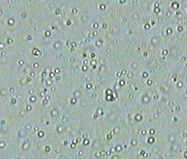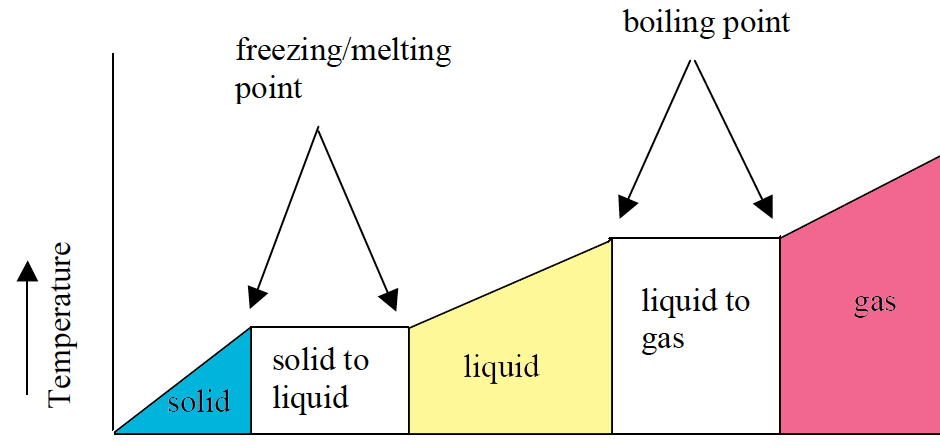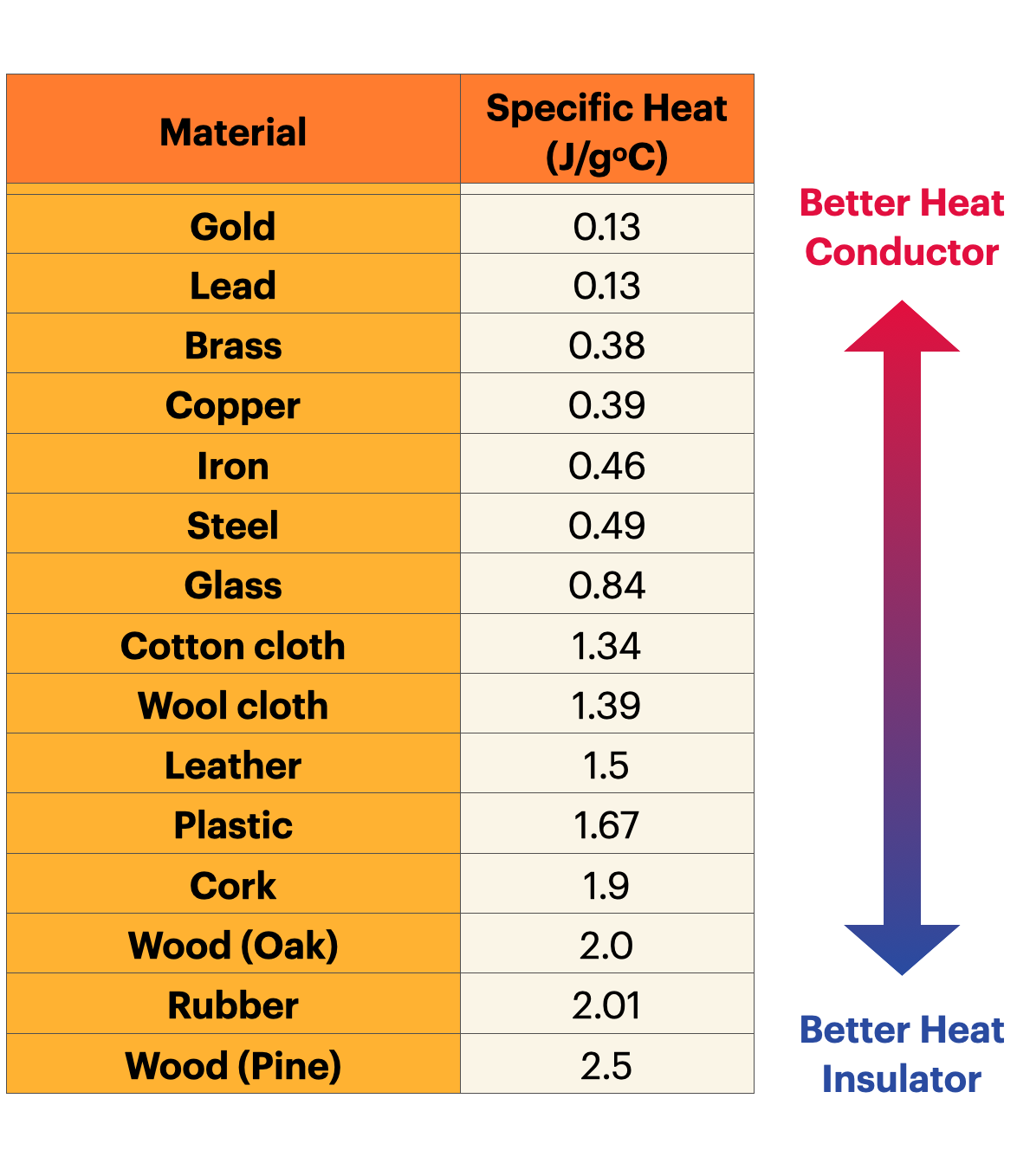Teacher Portal
Introduction &
Fun Facts
Heat and Heat Transfer

Heat & Heat Transfer: Introduction
In order to understand heat and heat transfer, it is important to gain an understanding of several basic concepts including energy, temperature, and the thermometer. Often when we discuss energy is it in the context of mechanical or external energy. We see something move or something fall and think of the energy of the moving object (kinetic energy) or gravitational potential energy. In contrast, the term heat is used to describe the sum or total of all internal or thermal energies of a substance. Internal or thermal energy includes the random motion (kinetic energy) and the potential energy of molecules. Understanding heat transfer, therefore, requires an understanding of the transfer of energy.
The Law of Conservation of Energy (First Law of Thermodynamics) states that energy can neither be created nor destroyed. It can only change forms or be transferred from one form to another. Because heat is the internal energy of a substance or system, this means that heat can neither be created nor destroyed. It can, however, be transferred from one area to another or it can be transformed into other forms of energy. The investigations in this CELL focus primarily on the transfer of heat from one area to another rather than its transformations into other forms of energy.
History
Questions often arise about how heat is transferred, what molecular events accompany the transfer of heat, and how the transfer of heat can be measured or observed. It is believed that before the 17th century, there was no universal method of quantifying heat. The Italian inventor Santorio was one of the first scientists to attach a numerical scale to an instrument for the purpose of quantifying heat. The instrument he invented was called a thermoscope. It was similar to modern thermometers in the sense that it was a long glass tube filled partially with air and liquid. Some of the air was expelled before the tube was put into a glass or bowl filled with liquid. As a result, the liquid rose up into the glass tube. As the air in the tube was heated or cooled, it caused the liquid in the tube to move up and down.

One of the first sealed thermometers was created in 1641 for Ferdinand II, the Grand Duke of Tuscany. Thermometers were based on similar principles as thermoscopes with the exception that they relied on the difference in heat to cause changes in the level of the liquid, rather than the air, in the sealed tube. This particular thermometer was a sealed tube filled with liquid that had 50-degree marks on it. However, no reference point (such as the temperature of boiling water) was used to create the scale. This thermometer was referred to as a “spirit thermometer.”
Over the next century, additional thermometers were constructed. Among the most recognizable was created by Daniel Fahrenheit in the early 1700s. His mercury thermometer used three reference points to create a scale for measuring temperature. Reference points were generated by placing the thermometer in an environment that would cause the liquid level to rise or fall. The level of the liquid would be marked and given a numerical value. The first reference point which he gave the numerical value 0 was obtained by placing the thermometer in a bath of ice melting in a solution of salt. The second reference point, which he gave the numerical value of 30 was the temperature of ice melting in water without salt. The third reference point was seen as a reproducible high point- the temperature of the blood of a healthy person. In this case, he obtained this temperature by placing the thermometer in the mouth or armpit of his wife, which he gave the numerical value of 96. He initially decided upon 12 intervals between his highest and lowest reference points. Using this thermometer he registered the temperature of 212 when it was placed in boiling water. Subsequent models extended the scale on the thermometer to 212 and changed the reference point of freezing water to 32 so that the difference between 212 and 32 was a more rational number (180). The scale created by Fahrenheit is still used today. The increments developed by him are referred to as degrees Fahrenheit (ºF).
 Modern-day thermometers used in the scientific, agriculture, and food industries continue, in some cases, to be calibrated the same way as those developed by Fahrenheit, Linnaeus, and Celsius. The low reference point is generated by placing the thermometer in freezing water. The high reference point is generated by placing the thermometer in boiling water. The distance between the two reference points is determined and divided into either 100 (Celsius) or 180 (Fahrenheit) increments or graduations. In Investigation One of this CELL, students will use this method to create/calibrate their own thermometer.In 1742, Anders Celsius developed a thermometer based on a scale in which the boiling point of water was given the numerical value of 100 and the freezing point of water a numerical value of 0. The scale was described as the centigrade scale because there were 100 increments between the two reference points. Centigrade literally means divided into one hundred degrees. A few years later in 1745, Carolus Linnaeus described a scale in which the freezing point of water was 0 and the boiling point was 100 as well. In 1948, the term Centigrade scale was changed to degrees Celsius (ºC).
Modern-day thermometers used in the scientific, agriculture, and food industries continue, in some cases, to be calibrated the same way as those developed by Fahrenheit, Linnaeus, and Celsius. The low reference point is generated by placing the thermometer in freezing water. The high reference point is generated by placing the thermometer in boiling water. The distance between the two reference points is determined and divided into either 100 (Celsius) or 180 (Fahrenheit) increments or graduations. In Investigation One of this CELL, students will use this method to create/calibrate their own thermometer.In 1742, Anders Celsius developed a thermometer based on a scale in which the boiling point of water was given the numerical value of 100 and the freezing point of water a numerical value of 0. The scale was described as the centigrade scale because there were 100 increments between the two reference points. Centigrade literally means divided into one hundred degrees. A few years later in 1745, Carolus Linnaeus described a scale in which the freezing point of water was 0 and the boiling point was 100 as well. In 1948, the term Centigrade scale was changed to degrees Celsius (ºC).
Although the development of thermometers allowed the temperature to be quantified, the understanding of heat and temperature during the 17th and 18th centuries was such that heat and temperature were seen as indistinguishable. In other words, no distinction was made between the two. Heat was thought to be a fluid that flowed from a hotter to a colder object. It wasn’t until the 19th century that investigations by Joseph Black, Benjamin Thompson, and J.P. Joule established that heat was not a fluid, but rather a form of energy and that forms of energy could be transformed.
Thermal Energy and Molecular motion
Today’s understanding of heat and temperature defines a difference between the two. To better understand this, it is important to recall that heat is the internal or thermal energy of a substance. This means that heat includes the kinetic and potential energy of molecules. Although unable to be seen by the unassisted eye, molecules in all states of matter, including solids, liquids, and gases move. Their motion is not coordinated, but rather random. However, because they do move, these molecules have kinetic energy.

It is actually possible to directly visualize the effect of thermal molecular motion in a fluid with a microscope. This motion is referred to as Brownian Motion, named after Robert Brown, who first described the effect. Whole milk contains small suspended droplets of lipids (fat). A small drop of milk is placed on a clean microscope slide and then diluted with a drop of distilled water. A coverslip is then added and excess fluid is absorbed with a tissue. When placed on a microscope, at first one usually sees streaming of the fat droplets. This streaming is not Brownian Motion, but rather a result of small currents in the fluid. When the fluid settles down, one is able to still observe the motion of the fat droplets. However, this motion is characterized by quick, jerky, random movements (pictured here). This is Brownian Motion and it is caused by the fat droplets being bombarded by rapidly moving water molecules. The movement of the water molecules is a demonstration of random thermal motion in the fluid.
If the milk experiment described above were to be repeated by carefully controlling the temperature of the slide, one would observe that the Brownian Motion of the fat droplets would increase when the fluid is warmer and decrease when it is colder. This is because the kinetic energy of the fluid is altered by temperature! This is a very good visualization of the fact that, even at the molecular level, kinetic energy is still the energy of motion.
Temperature and Thermometers
Thermometers, which generate numerical values of temperature, measure the average kinetic energy of molecules. To understand why, think of molecules as moving balls. Balls that move faster make more collisions with other molecules. The faster a molecule moves, the more kinetic energy it has, and the more collisions it makes, and the farther it tends to move with each collision. As molecules collide with other molecules, they increase the motion of the molecules with which they come in contact. If all of the molecules are contained within a closed area, eventually all of the molecules will have the same motion or kinetic energy.
Now imagine a thermometer that is placed in a beaker of boiling water. The molecules of the boiling water have a very high kinetic energy. They are moving quickly and making collisions quickly. They collide with the molecules of the glass tube of the thermometer increasing their kinetic energy. The collision of the glass molecules is transferred to the liquid inside the thermometer, increasing the motion of the liquid molecules. As the molecules of the liquid inside the thermometer increase in kinetic energy, they move faster and farther with each vibration or movement. As a result, the liquid inside the thermometer expands, rising up the tube.

The reverse is true when the thermometer is placed in a liquid that is colder than itself. In this case, the transfer of kinetic energy is from the liquid inside the thermometer to the surrounding liquid. As kinetic energy is transferred out of the liquid in the thermometer, the molecules slow their vibrations, and the distance between the molecules decreases. As a result, the liquid contracts and falls down the tube. In both of these examples, the level of the liquid in the thermometer is read as a numerical value, called temperature. Temperature is therefore defined as a measure of the average kinetic energy of a substance or environment.
Temperature and Phase Transitions
The figure below summarizes the relationship between temperature and the physical state of matter:

In this experiment, we apply heat to a solid sample and note the effect on temperature on the physical state of the sample. As the temperature rises, the transition from solid to liquid (melting) occurs. (The opposite transition at this point, when the temperature is reduced, is called the freezing point.) Notice that there is a period where the temperature does not change as the solid melts. We will not discuss the reasons behind this observation other than to say that some of the heat that is added is required to break forces holding the molecules together into a solid and that the added heat does not increase the measured temperature of the sample until all such attractive forces are broken. Once the solid completely melts, the temperature of the liquid can increase until the sample reaches the second phase transition, that from liquid to gas (boiling point). During this transition, there is another period during which the temperature does not increase, once again due to some of the heat being used to break the attractive forces holding the molecules into a liquid.
Effect of Solutes on Freezing and Boiling Points
Have you ever wondered why salt is added to freezing roads or why it is harder for ocean water to freeze than freshwater? The answer lies in a concept called freezing point depression. When a solute, such as salt, is added to water, it reduces or lowers the freezing point of water. In other  words, the water freezes at a lower temperature. The more solute is added to the water, the lower the freezing point, to a point. Eventually, the solute will reach a point at which no more can be dissolved in the water. For salt (NaCl), this occurs in a 23.3 % NaCl solution.
words, the water freezes at a lower temperature. The more solute is added to the water, the lower the freezing point, to a point. Eventually, the solute will reach a point at which no more can be dissolved in the water. For salt (NaCl), this occurs in a 23.3 % NaCl solution.
Adding a solute to water also changes its boiling point. This phenomenon is referred to as boiling point elevation. Adding salt to boiling water will raise its boiling point. When water boils, the water molecules collide more often and as changes in kinetic and potential energy of the molecules occur, some water vapor (gas molecules) is released from the liquid. The more collisions, the more water vapor that is released. When NaCl is added to water, the Na+ and Cl– ions occupy the space between the water molecules. This reduces the number of collisions between water molecules and as a result reduces the amount of water vapor that is released from the liquid. More energy (heat) is needed for the water vapor to escape the liquid. This increases the boiling point of the water. In Investigation Two students will compare the freezing and boiling points of water and solutions with different salt (NaCl) concentrations. Although students’ experiments involve water only, freezing point depression and boiling point elevation occur with other liquids.
Specific Heat Capacity
The expansion, contraction, and phases changes associated with the transfer of heat are some examples of physical changes in matter associated with the transfer of heat. In addition to exploring these physical changes, students will investigate another physical property of matter, specific heat capacity, as they perform their experiments in Investigation Three. Specific heat capacity is related to a substance’s ability to absorb heat.

The underside of the space shuttle is covered with over 20,000 six- by six-inch tiles made of silica fibers. Silica is an excellent insulator. Silica is formed from the element silicon, a metalloid.
All substances have the ability to absorb heat. However, the amount of heat that is absorbed varies from one substance to another. The total heat that a substance absorbs is directly proportional to the mass of that substance, the change in temperature that the substance has undergone (from cold to hot), and the object’s capacity for being heated. The specific heat capacity of a substance is defined as the amount of energy (in joules) that is required to raise the temperature of 1 gram of a given substance by 1 oC. All specific heat capacity values are constant. For example, the specific heat capacity for water is 4.184 J/g oC, meaning that it takes 4.184 Joules to raise the temperature of 1 gram of water by 1 oC.
Specific heat capacity also relates to objects being described as conductors or insulators (poor conductors) of heat. As a rule of thumb, a good conductor of heat absorbs heat quickly and usually has a high capacity for heat (that is it can gain and retain heat easily and quickly) as compared to a poor conductor of heat. Poor conductors of heat are also referred to as insulators. Metals tend to be good conductors of heat, whereas nonmetals, plastics, and woods tend to be poor conductors (good insulators). For this reason, we use often use wooden or plastic handles for our cookware rather than metal, since wood and plastic have low specific heat capacities than metal.
FUN FACTS
Insulation
All new building construction uses some form of insulation. If you have ever seen the attic of a house, chances are you saw rolls and rolls of pink insulation. This type of insulation, usually made of fiberglass, looks like cotton candy… but it’s not!

Insulation is important. Even though all insulations pose some level of environmental hazard, some are more environmentally friendly than others.

Looking at this chart, one can understand why fiberglass insulation is so widely used. However, attics and roofs are not the only places through which heat loss occurs from buildings. Below is an infrared photograph of a house. The reddest areas indicate the places where heat is being lost from the house.

Notice how much heat is lost through the windows! This is because glass is not a great heat insulator. Instead, it is a fairly good thermal conductor. That is, it conducts heat rather well. In this case, it conducts heat energy right out of the house.
Specific Heat Capacity


Galileo Thermometer
Although Galileo may not have invented it, an interesting thermometer (actually more precisely a thermoscope) is called the Galileo thermometer. It is a liquid-filled, sealed glass column with glass balls of different mass suspended in it.
Galileo Thermometer
The glass balls contain different amounts of colored liquid to give them their range in mass. As you probably have already learned, the density of a liquid depends on its temperature. Consequently, the lightest balls float while the heavier balls sink.

The balls are calibrated and marked with a metal tag with a temperature on stamped on it. As the temperature of the air around the thermometer drops, the liquid inside the long glass column also drops and so increases in density. As the density of the liquid in the column increases, a sunken glass ball will now be able to float. Thus, the temperature marked on the lowest floating ball is the temperature of the liquid and gives an idea of the air temperature in the room. It is not only a cleaver instrument, but also a quite beautiful one. Unfortunately, it is neither very accurate or practical to use. If you see a Galileo thermometer today, it is most likely being used as a decoration.
LEARN THE LABLEARNER LINGO
The following list includes Key Terms that are introduced within the Backgrounds of the CELL. These terms should be used, as appropriate, by teachers and students during everyday classroom discourse.
Note: Additional words may be bolded within the Background(s). These words are not Key Terms and are strictly emphasized for exposure at this time.
Investigation 1:
- Kinetic energy: energy of motion
- Temperature: measure of the average kinetic energy of matter within a given substance – The higher the kinetic energy, the greater the rate of random motion, and the higher the temperature.
- Heat: thermal energy or the total of all energy within a substance – It can also be described as the transfer of thermal energy.
- Equilibrium: the attainment of invariability in a “closed system”
- Law of Conservation of Energy: Energy can be converted from one form to another, but can neither be created nor destroyed.
- Heat transfer: the transfer of thermal energy from areas of high temperature (kinetic energy) to low temperature (kinetic energy)
- Freezing point: the temperature at which a liquid becomes a solid – At the freezing point, there are equivalent amounts of liquid and solid molecules. Above the freezing point, the liquid form of matter predominates. Below the freezing point, the solid form of matter predominates.
- Boiling point: the temperature at which a liquid becomes a gas – Above the boiling point, the gaseous form of matter predominates. Below the boiling point the liquid form of matter predominates.
Investigation 2:
- Freezing point depression: the lowering of the freezing point of a liquid – Addition of a solute to a liquid decreases the freezing point of a liquid. The liquid freezes at a lower temperature.
- Boiling point elevation: the raising of the boiling point of a liquid – Addition of a solute to a liquid increases the boiling point of a liquid. The liquid boils at a higher temperature.
- Rate: the quantity of reactants consumed or products formed over a specific period of time
Investigation 3:
- Specific Heat Capacity: the amount of heat (joules) that is required to raise the temperature of 1 gram of a substance by 1 degree centigrade
- Joules: unit of energy

